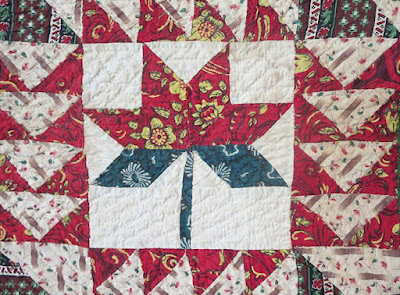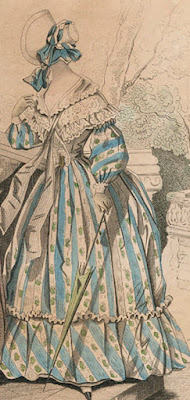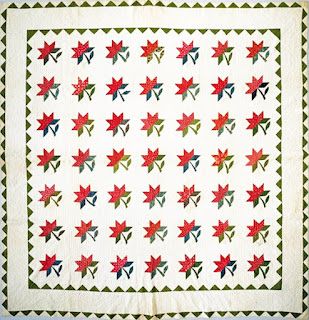Last week we got carried away with the well-documented lives
of the Crawford/Fawcett/Hopkins families in the Shenandoah Valley of Virginia.
This week we can look at the extraordinary quilt handed down.
90" x 98"
Wisconsin Project & the Quilt Index
a little larger than the conventional calicoes seen in quilts after 1840. A good deal of plain white backs the florals.
When striped effects were quite the fashion in day dresses
1) Age + condition
2) Visual appeal
3) Fabrics --- See above
4) Early example of a style & pattern. The pattern the family called Peony is a rather early fashion in red and green quilts, the color palette that became the rage in the early 1840s.
5) Much provenance or history that can be corroborated in records. See last week's post.
Quilt dated in the quilting 1840, Lucy Faris
National Museum of American History
Date-inscribed 1843-1845, Pink Phillips
One of Pink's teal blue-green blocks
Quilt date-inscribed 1845, Patsy Buckner Blakey, Missouri
One could look at the busy block and the busy set as a transitional style....













2 comments:
The fabric seems like great inspiration for a new line. Hint - Hint
The stems are different from block to block -- adding some movement (and humor?) to the design.
Post a Comment